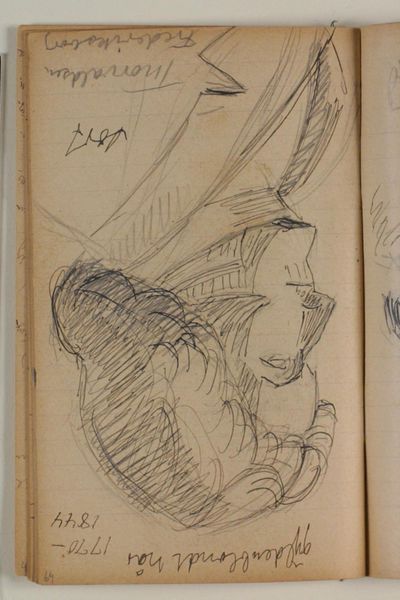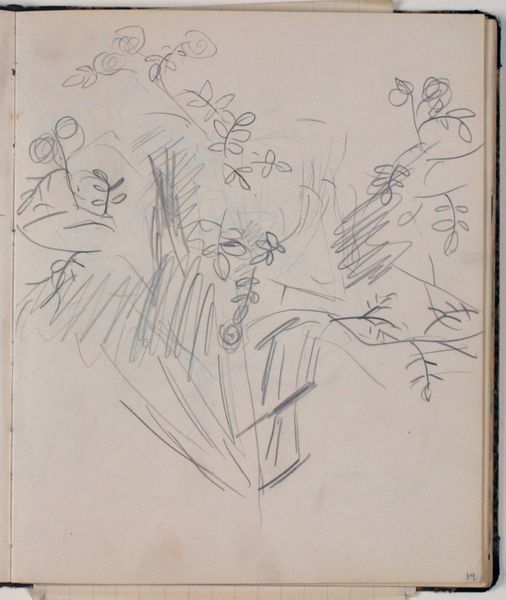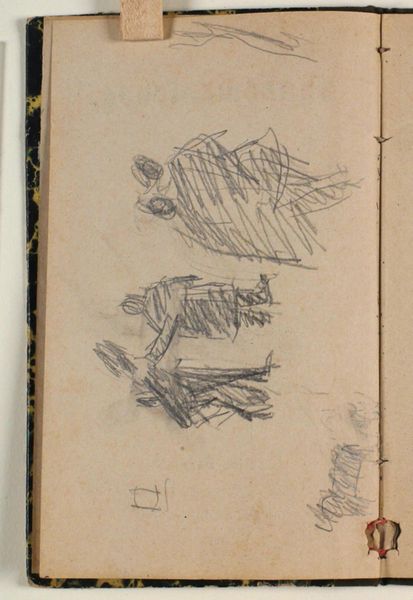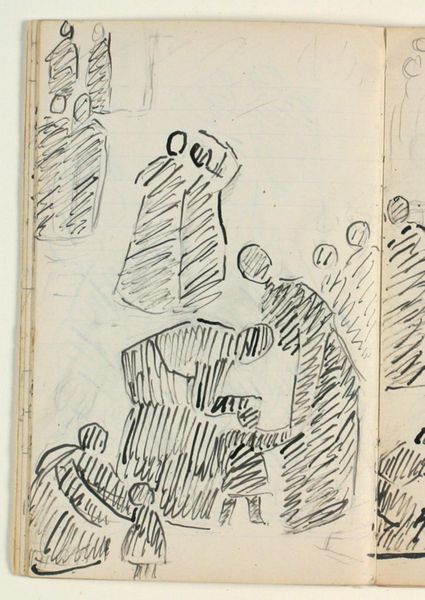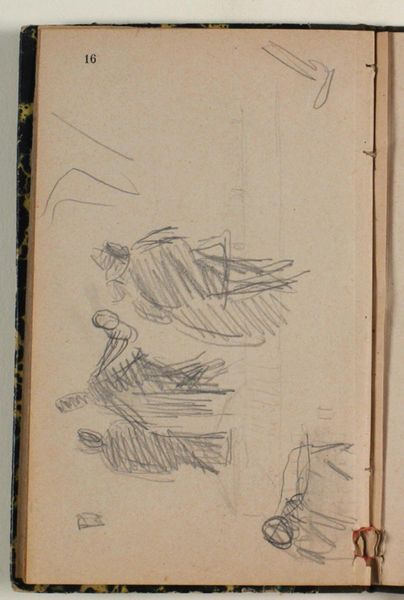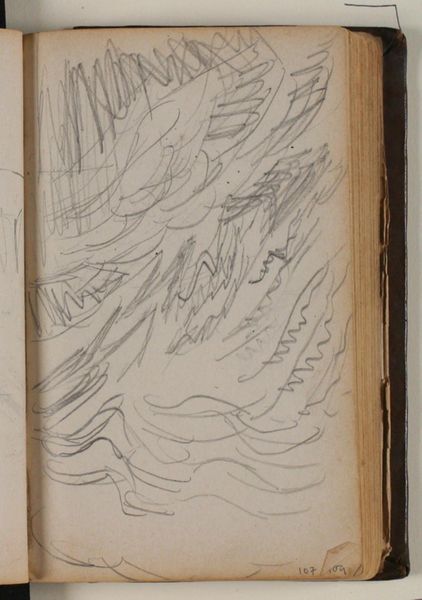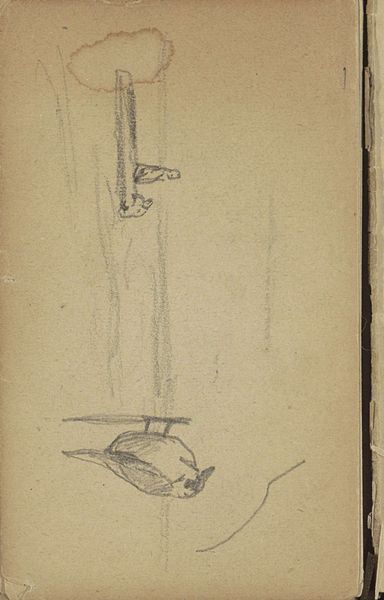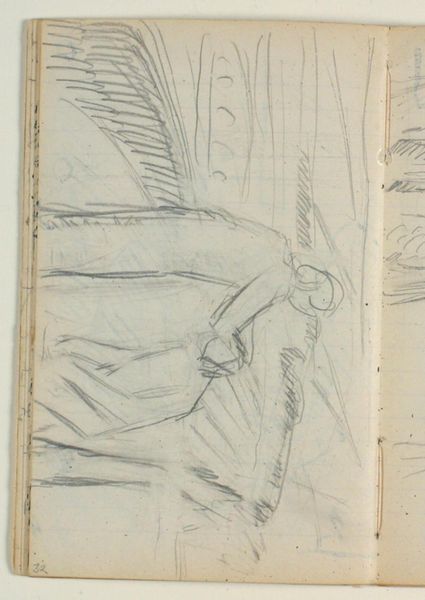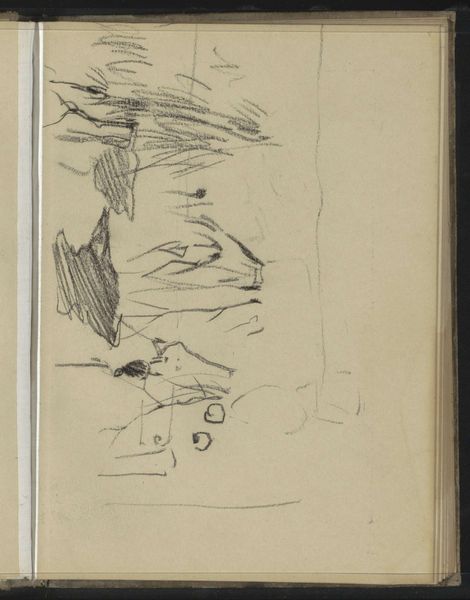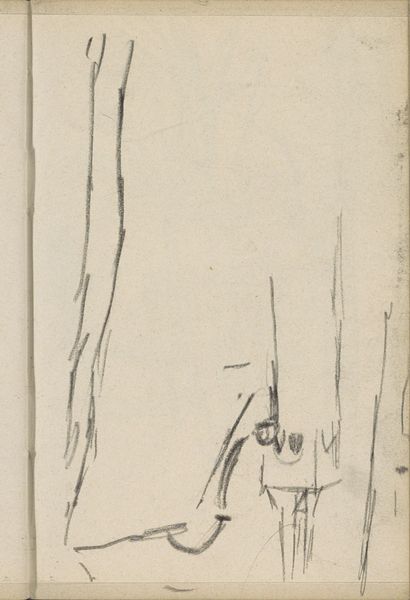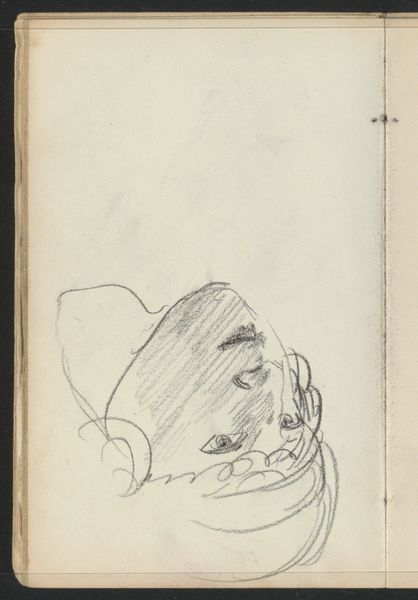
Studie af G. Siboni efter D. Monies maleri (1838) på Frederiksborg 1930 - 1938
0:00
0:00
drawing, pencil
#
portrait
#
drawing
#
sketch
#
pencil
#
realism
Editor: Here we have Niels Larsen Stevns's pencil drawing, "Study of G. Siboni after D. Monies Painting (1838) at Frederiksborg," created sometime between 1930 and 1938. It seems like a quick, preparatory sketch. What do you find most interesting about this work? Curator: What immediately grabs me is the layering. We're seeing Stevns' interpretation of another artist's work, of a historical painting housed in a very public, nationally significant space—Frederiksborg Castle. It begs the question, why Siboni? Why Monies? Why this particular moment of Danish history memorialized in paint, now re-interpreted as a study? It's an act of artistic engagement with national identity. Editor: So, the drawing itself isn't just about the figure, but more about its relationship to these larger contexts? Curator: Precisely. The act of copying was an academic exercise, a way of understanding the artistic predecessors. But exhibiting it, showing this behind-the-scenes look, gives it another dimension. Stevns acknowledges the power of these historical images and perhaps invites the viewer to question their construction, their role in shaping our understanding of the past. Where do you see the power in that type of statement? Editor: I guess, by showing his process, he demystifies the official narrative and reveals the layers of interpretation involved in creating any historical representation. Almost like saying "history is constructed, not just a given fact." Curator: Exactly! The sketch, seemingly simple, then becomes a commentary on the entire institution of historical representation itself. It suggests art galleries are more fluid than fixed. Editor: It’s fascinating how much social context a simple pencil drawing can hold. Thank you. Curator: It speaks to how the value of an image stems less from talent, and more from how art responds to its socio-political setting, for artists and viewers alike.
Comments
No comments
Be the first to comment and join the conversation on the ultimate creative platform.
